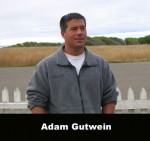2003 Frolic Survey Project
Dive Into History, Mapping a Gold Rush Shipwreck
Wreck Site is a Candidate for State Underwater Park
During the summer of 2003, a team of divers led by four prominent maritime archaeologists explored and mapped the remains of the clipper Frolic, one of California’s most important Gold Rush-Era shipwrecks. The team will return July 26 through August 5, 2004 to complete the project.
The Frolic, laden with Chinese household goods bound for San Francisco, crashed into the Mendocino coast in July 1850, at the north end of today’s Point Cabrillo Light Station & Nature Preserve. The lost bounty included 21,000 porcelain bowls, marble inset tables, a prefabricated house with oyster shell windows, and 6,109 bottles of Edinburgh ale.
Although the ship’s crew, the Pomo Indians and 20th century divers have claimed much of the cargo, more may be buried under the remaining hull, according to San Jose State anthropology professor Tom Layton, Ph.D. Dr. Layton was the principal shipwreck researcher and is the author of two Frolic books.
“Because of its age and cargo, the Frolic is one of the most important Gold Rush wrecks for California history,” explained Napa Valley College Professor Sheli Smith, Ph.D., a maritime archaeologist specializing in Gold Rush era artifacts. “It’s certainly the most well researched Gold Rush ship not yet professionally analyzed.”
Dr. Smith coordinated the survey project for the California Department of Parks and Recreation. Regarding the quality of the investigators, she commented: “This team is quite remarkable, as good as they come — all principals are leaders in the field who bring skills at the top of their game.”
The project was funded by individual contributions and a grant from State Parks to the Point Cabrillo Lightkeepers Association (PCLK), whose volunteers and board members provided the dive team with logistical support throughout the project.
See underwater video of the project.
The Team
- Sheli Smith, Ph.D.
Project Director;
Professor of Archaeology, Napa Valley College;
Gold Rush Wreck Expert
- Dede Marx
Submerged Cultural Resource Consultant;
Graduate (with MA) from East Carolina University, Program in Maritime Studies
- Kelly Gleason, Ph.D.
Candidate in Coastal Resources Management;
Program in Maritime Studies
- John Walsh
Frolic Project Diver, Boat Operator, and Cameraman;
Mendocino Fire District staff
- Charles Beeker
Field School Staff Archaeologist;
Director, Underwater Science, Indiana University
- Adam Gutwein
Archaeological Field School Student;
Project diver and undergraduate in underwater science program, Indiana University
- Annalies Corbin, Ph.D.
Field School Staff Archaeologist;
Project co-archaeologist;
Professor of Nautical Archaeology, Maritime Studies Program, East Carolina University
- Matthew Lawrence
Archaeological Field School Student;
MA in Maritime Archaeology, East Carolina University, Greenville, North Carolina
- Mike Esher
Archaeological Field School Student;
Undergraduate in underwater science program, Indiana University
- Jaime Brown
Archaeological Field School Student;
Undergraduate, General Studies, Indiana University;
Earning certificate in underwater resource management
- Tom Layton, Ph.D.
Prehistoric-Archaeologist & Frolic Authority











